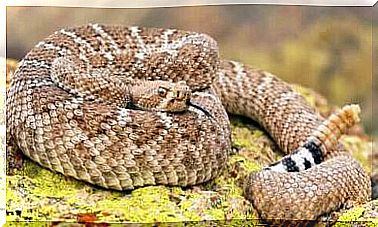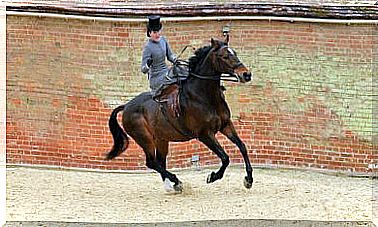Everything You Need To Know About Healthy Pig Farming
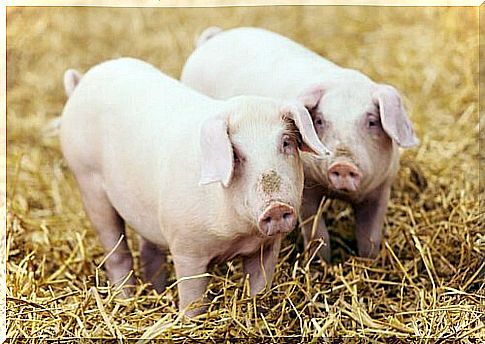
The healthy rearing of pigs requires specific knowledge to maintain the health and well-being of these animals. Below, we’ll summarize some fundamental advice that will help you in healthy pig rearing.
Healthy pig rearing
First, the term “pig” generically refers to races different from the mammalian species Sus scrofa domesticus . They are characterized by a rounded and robust body, with a short tail, short hooves and four toes.
Despite the weight of their body, they are agile and sensitive animals, which stand out for their high level of intelligence and the capacity for learning they have. When they are trained, they are able to memorize and obey different orders. Furthermore, they have a higher yield than most mammals.
Their personality is naturally active and docile, which is why they are also successful as pets. When they are trained, they have the ability to socialize with other animals, interact and maintain bonds of friendship with their owners.
Healthy pig rearing: balanced diet
Pigs are animals native to tropical or temperate climates. For this, they tend to maintain a mostly herbivorous and very varied diet in their natural habitat. About 70% of their diet is based on various vegetables (fruits, vegetables and legumes) in addition to fresh grains and cereals.
Food to put on weight
Most pigs are raised to market their meat. Pork protein is appreciated by cooks and recommended by nutritionists. In fact, the market presents an increasing demand for this animal. This intense activity turns out to be very attractive for farmers, ranchers and entrepreneurs.
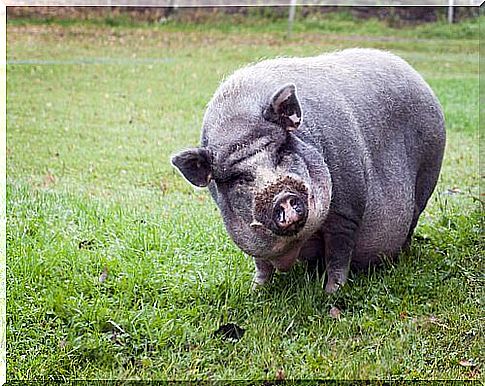
Breeding for human consumption usually employs fattening techniques to optimize profits. For this, commercial feeds are manufactured with a very high concentration of carbohydrates, around 20% of protein and little fiber.
It is noteworthy that in the creation for “homemade” fattening, farmers usually offer portions of ground meat and washing to pigs.
Feeding a pet pig
Nowadays, many people choose to keep pigs healthy as pets, as is the case of the Vietnamese pig. In these cases, the intention is not to fatten the animal, but to provide it with a balanced diet.
For this reason, it is not ideal to use commercial feed intended for farm pigs. Ingesting these products can cause domestic pigs to easily develop obesity and associated diseases.
When adopting a pig as a pet, it is essential to respect its nutritional needs. It is important to give preference to a natural diet and pay close attention to food conservation. They must be kept fresh and always in good condition.
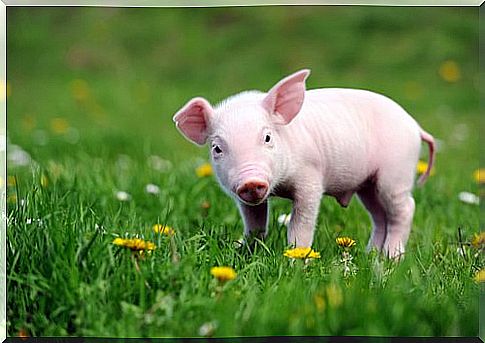
It is noteworthy that many owners resort to the help of supplements and isolated artificial vitamins to complement the animal’s diet.
Adequate hydration
Pigs, like all mammals, need increased hydration, especially during the summer. This is because adult pigs, to gain weight, can consume more than four liters of water per day, while a domestic animal usually ingests close to two liters per day.
Definitely, in commercial and domestic creation it is essential to leave fresh and clean water available. In addition, it is recommended to clean the feeder and drinker of your animals daily.
Environment and Hygiene
Contrary to the prejudices that we have with this mammal, pigs are clean animals and do not give off a bad smell. It is the lack of proper environmental hygiene that causes the nauseating smell that we unfairly attribute to the animal.
Therefore, in healthy pig rearing, we must give preference to hygiene and the proper conditioning of their environment. It is recommended to bathe the pigs every two months, to keep their skin and hair in good condition.
On farms, it may be better to leave a large water reserve (a lake, a swimming pool, etc.) at your disposal. In addition, it is important to provide them with muddy sites, as pigs must maintain their natural habit of digging and sliding in mud.
The ideal environment for raising pigs should also offer a free area, preferably with pasture and land. As they are native to warm and temperate climates, they must be kept in places with temperatures between 19°C and 24°C.
Physical activity and domestication
In their natural habitat, pigs tend to roam and run freely throughout the day. Furthermore, they reproduce very often. This is because females are in heat at different times of the year. This allows them to expend a lot of energy on a daily basis and naturally control their weight.

That’s why, for the healthy creation of a pig, as a pet, there should be ample space available for him to carry out physical activities. Outdoor walks and regular encouragement for physical exercise are also recommended.
When it comes to domestication, the ideal is to start your education at two months of age. During this period, the piglets develop their notions of coexistence and shape their behavior.
Preventive medicine
Therefore, pigs are very resistant and hardly get sick. With good nutrition and regular physical activity, your pigs can stay strong and healthy. In addition, vaccination and periodic consultations with a specialized veterinarian are also essential for healthy pig rearing.



